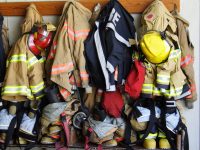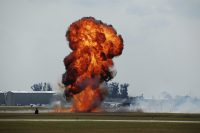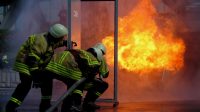Category: Emergency Preparedness and Response
No one wants it to happen, but an emergency, natural or manmade, can strike at anytime, 24/7. What’s more, it need not be a major, nationally-televised incident, such as a hurricane, earthquake, or act of political terror. An event as common as a local building fire can present just as large a challenge to you. These resources will help you create a plan for handling such crises, whatever their scope, and to carry it out in a way that best protects your employees and your company.
Free Special Report: 50 Tips for More Effective Safety Training
After a large-scale disaster, workers often work longer shifts and more consecutive shifts than they would typically work. The fatigue and stress that may arise from strenuous work schedules can be compounded by the physical and environmental conditions in the affected area after a disaster: nonexistent, damaged, or limited critical infrastructure (roads/traffic signals, utility lines, […]
Emergency workers who deploy to work at disaster sites caused by weather, earthquakes, epidemics, and other catastrophic events often put in much longer than 8-hour shifts. Although workers in these fields are generally highly committed to their jobs and find the jobs rewarding in ways that make long hours seem bearable, they are at substantially […]
Every time a facility explodes, we look for ways it could have been prevented. Well, in the wake of a refinery explosion in Richmond, California, Cal/OSHA has proposed strict process safety measures at oil refineries. We are taking a look at Cal/OSHA’s proposal because it has been suggested that other states follow California’s lead. The […]
The EPA claims that there are sufficient regulatory reasons for TSDFs to be in contact with local authorities concerning emergency procedures. The Agency points to 40 CFR 264.30 to 264.37 and 40 CFR 265.30 to 265.37, the requirements that TSDFs develop preparedness and prevention plans, and specifically 40 CFR 264.37 and 40 CFR 265.37, where […]
Each year, fire erupts at some 70,000 U.S. workplaces, killing 200 employees, injuring thousands, and causing billions of dollars in property damage. Most workplace fires are the result of human behavior rather than equipment failure, which means they can be prevented with a proactive program reinforced by training. Yesterday, we looked at the major causes […]
It was around 4 a.m. on Saturday, March 7, when the AMF bowling alley in Huntsville, Alabama, caught fire. As a cloud of smoke spread over the sleeping city, firefighters entered the building to fight the blaze, which is believed to have started in the bowling alley’s kitchen. While the firefighters moved through the building, […]
10 Tips for Communicating an Environmental Crisis Accept responsibility for real and perceived environmental risks at your facility. The time to develop a public relations program is not after the incident happens. Facilities should already have a plan that addresses crisis communication. Companies that isolate themselves in times of crisis will be blamed by a […]
What would you instinctively do if you thought you heard a gunshot at work? Walk toward the sound to see what happened Pick up the phone and call down to the front desk Ask two or three of your co-workers to see if they heard it too Immediately get up and get out of the […]
In many workplaces, when there is a fire or other disaster affecting the building, the focus is on getting people out of the building quickly and safely. Workers are trained to know their closest emergency exits and at least two ways to reach them (in case one path is blocked). They know how to activate […]
TRI is designed to provide citizens with information about chemicals being used, processed, manufactured, or released from facilities in their communities. The basic premise of TRI is that citizens have a right to know about toxic chemicals that are handled or released in their community. Meaning of “Release” under TRI Under the Emergency Planning and […]










